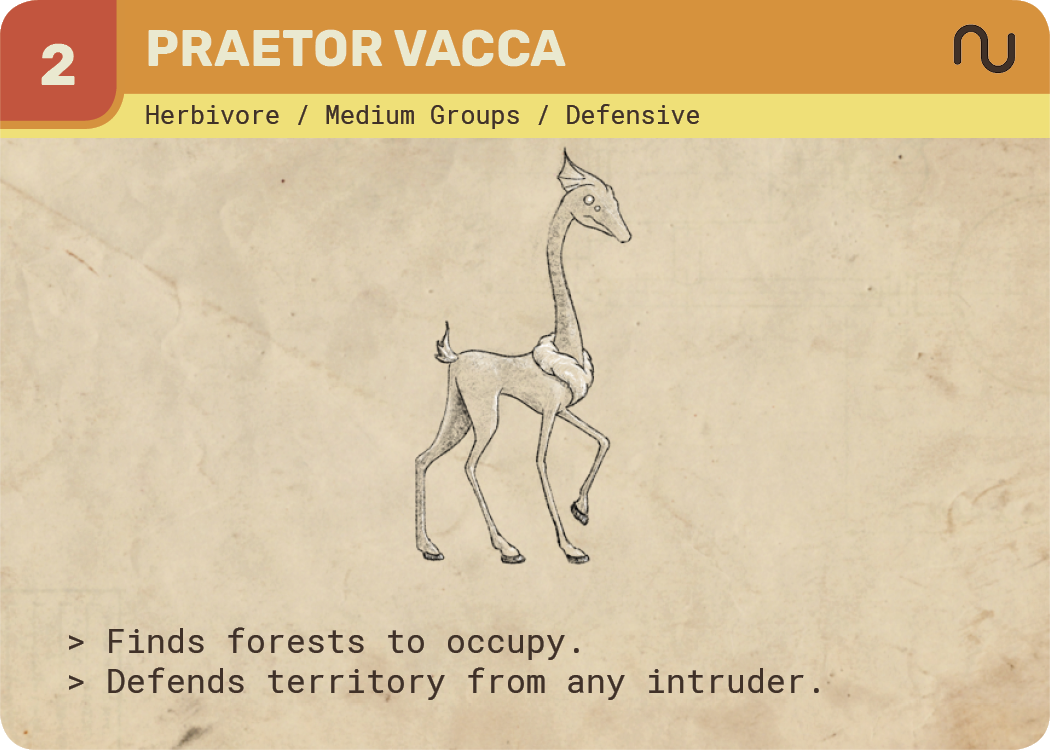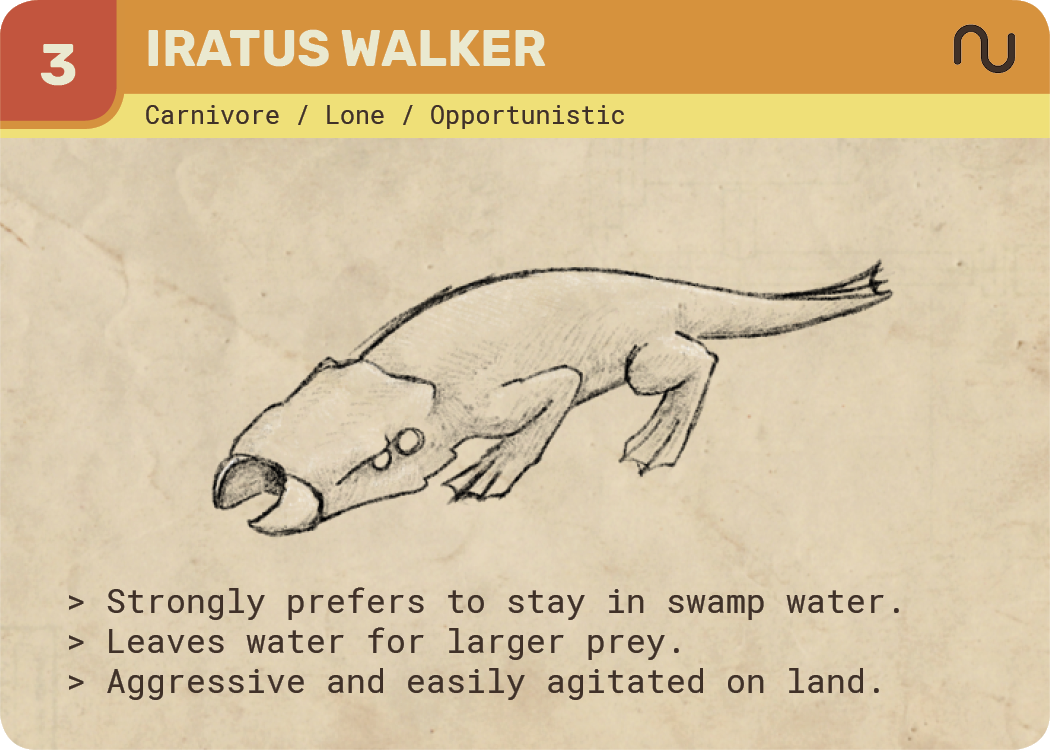Far Away is our first “traditional” board game. Most of our titles are narrative-driven games. We strongly feel there isn’t an explicit line between the two genres. Games tell stories: every session creates a small world. That feeling is made explicit in Far Away, as the players must feel each world is unique. In this medium, the players have the unique opportunity to reinterpret each permutation of cards and hexes. Far Away’s creatures are the focal point for this novel storytelling.
Let’s examine some Far Away creatures.
The text on the cards gives the players room to interpret creature behavior. The Iratus Walker “Strongly prefers to stay in swamp water” and “leaves water for larger prey.” It’s also an “opportunisitic” “carnivore” that prefers to be alone. We have an idea in our head of how that creature acts, though the specifics may vary person to person. The other creatures in the world help define this alien. If the Iratus is the apex predator, then it might be more eager to hunt. If larger beasts lurk on land, it may be content to wait for prey to enter its swamp.
Here’s the real question: what does the Iratus do when it encounters a player? In the abstract, we’d probably all say it tries to eat the player. In practice, when it’s your avatar about to get chomped, we may find a dozen loopholes in that text to save us. This creates an interesting design dilemma. How do we make force negative consequences while maintaining flexible storytelling?
The vast majority of our Far Away feedback is about these creatures. It’s split down the middle. Some players love the control they get to tell the planet’s story. Others would like more guidance to force them to make hard choices. We try to be player-driven in our design and responsive to feedback, so it’s a quandary to have two equally liked and valid outcomes. We have two paths forward: find a perfect compromise or have two systems.
The Domina Solis and Caulis Canis are two of the creatures players seem to control more “fairly”. The Iratus Walker and Praetor Vacca seem to be harder for players to make consistent choices about. There may be a way to code the language and give enough clear instruction to force players’ hands without compromising the idiosyncrasies that crop up in a game. We want people to create their own behavior flowchart as they play and internalize it. That way, you can handle and encourage moments of chaos. What happens when a herd of Praetors is fleeing from a Domina and walk into an Iratus’s swamp while a Canis and a player are one hex away?
Right now, you’d answer that question through intuition. Some players relish the opportunity to infuse their personality into that scenario. But what if we included a system to answer that decisively? Maybe some choice dice or a separate bestiary explaining in-depth behavior. If we made these systems optional, we could preserve the narrative-driven players’ experiences while helping those who need guidance. The downside of two systems? Ignoring extra cost, it adds confusion. What’s the “correct” way to play?
Next Sunday, we’re delving into creature design solutions more. CPG is doing a Kickstarter Live stream. Stay tuned for the time details. Bring your thoughts about creatures and other design decisions.





